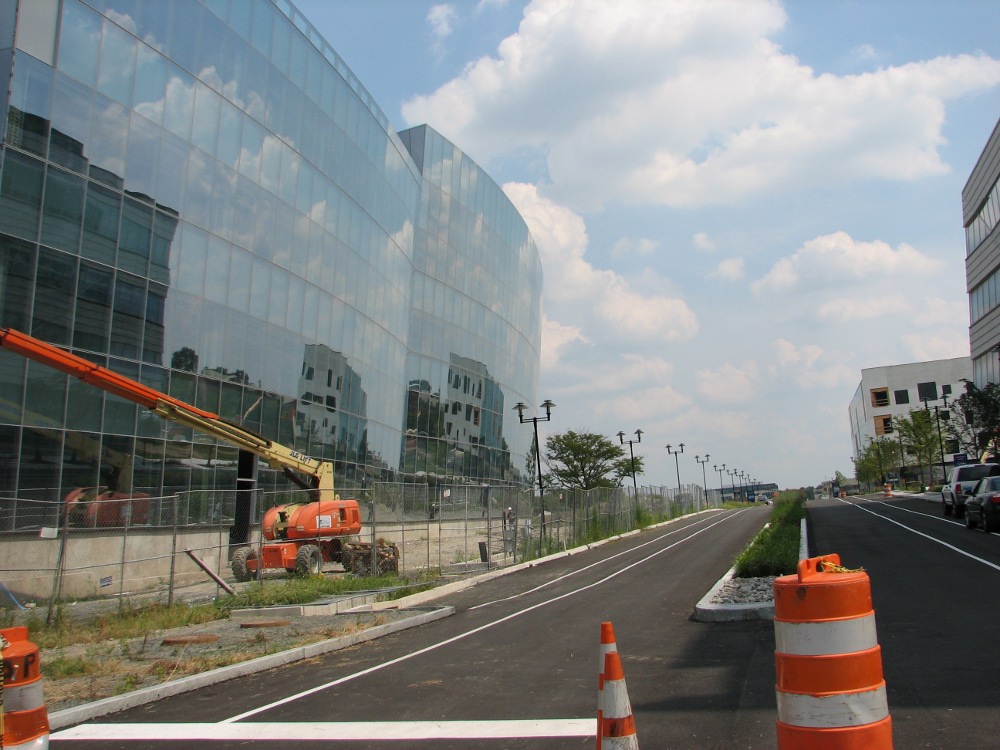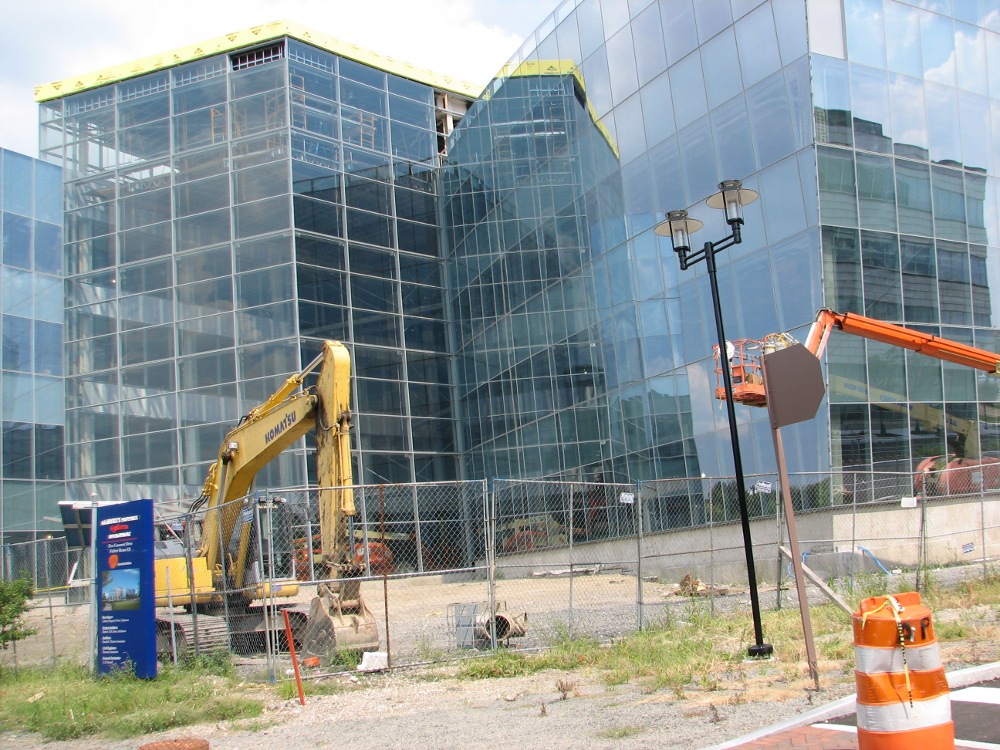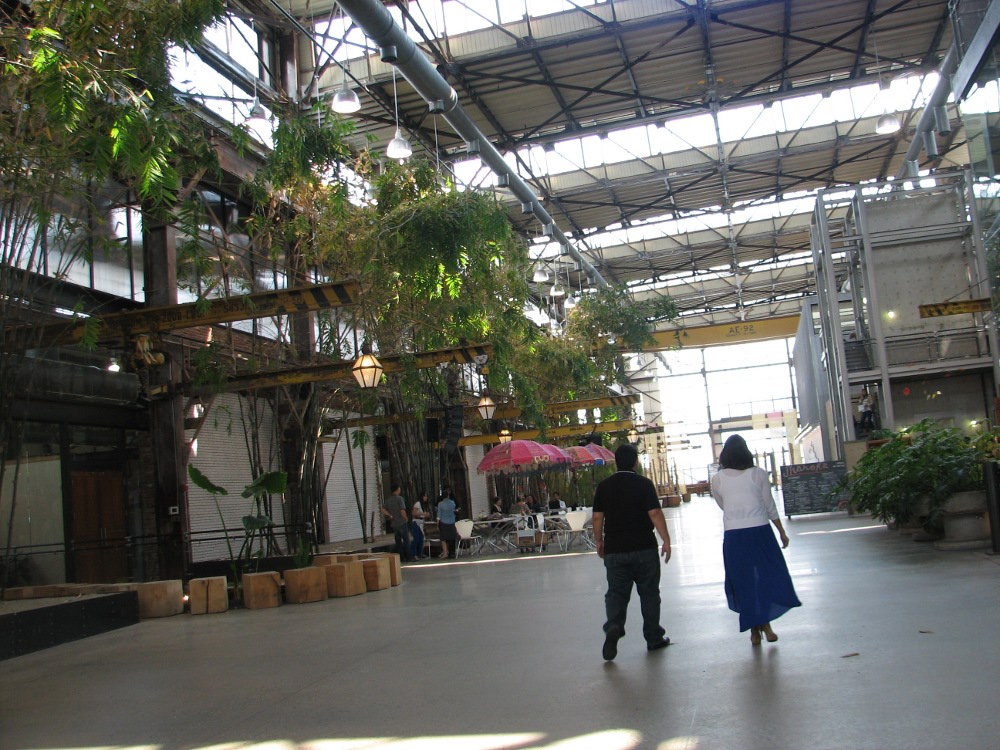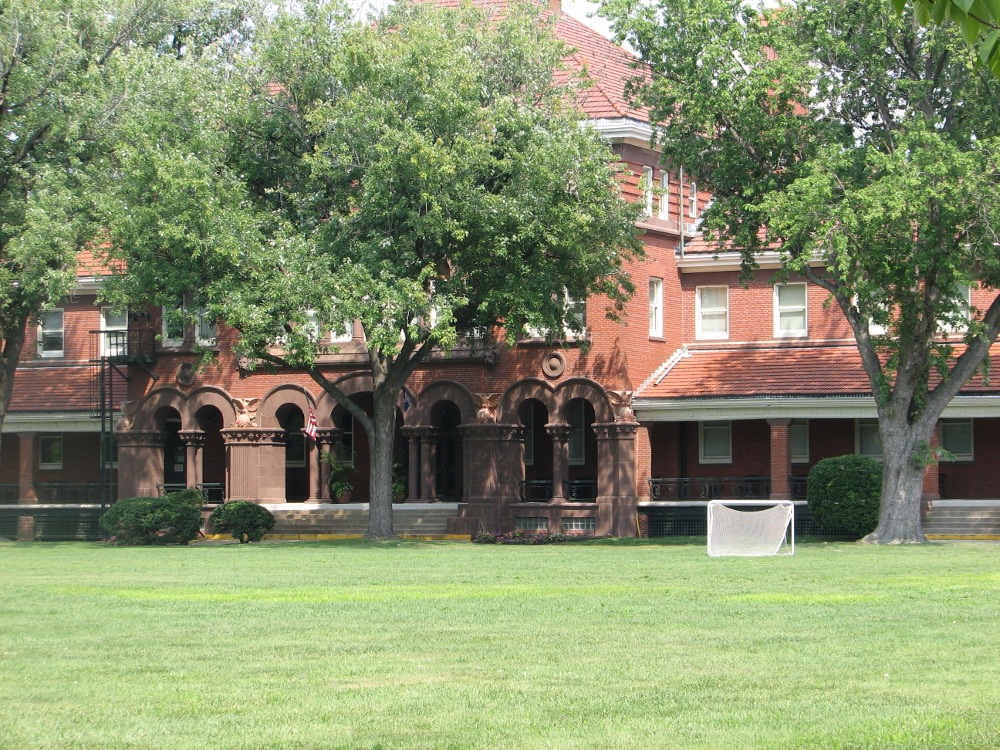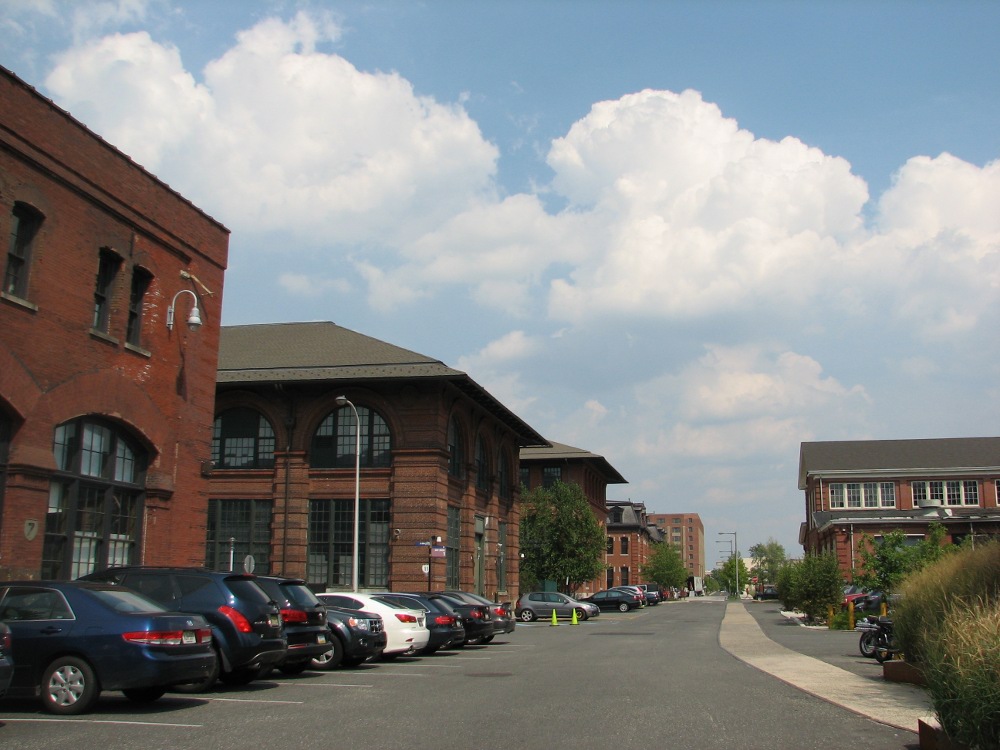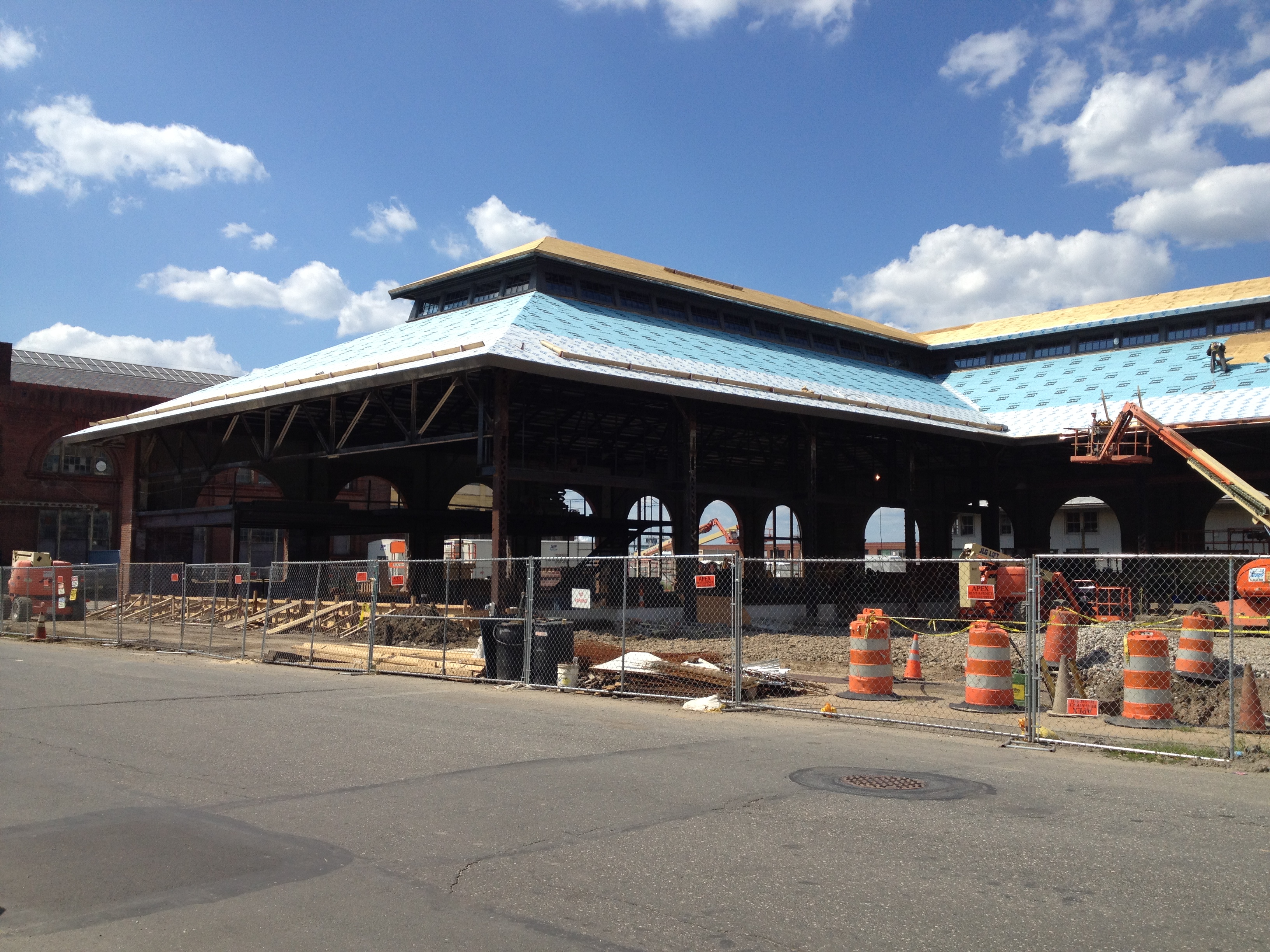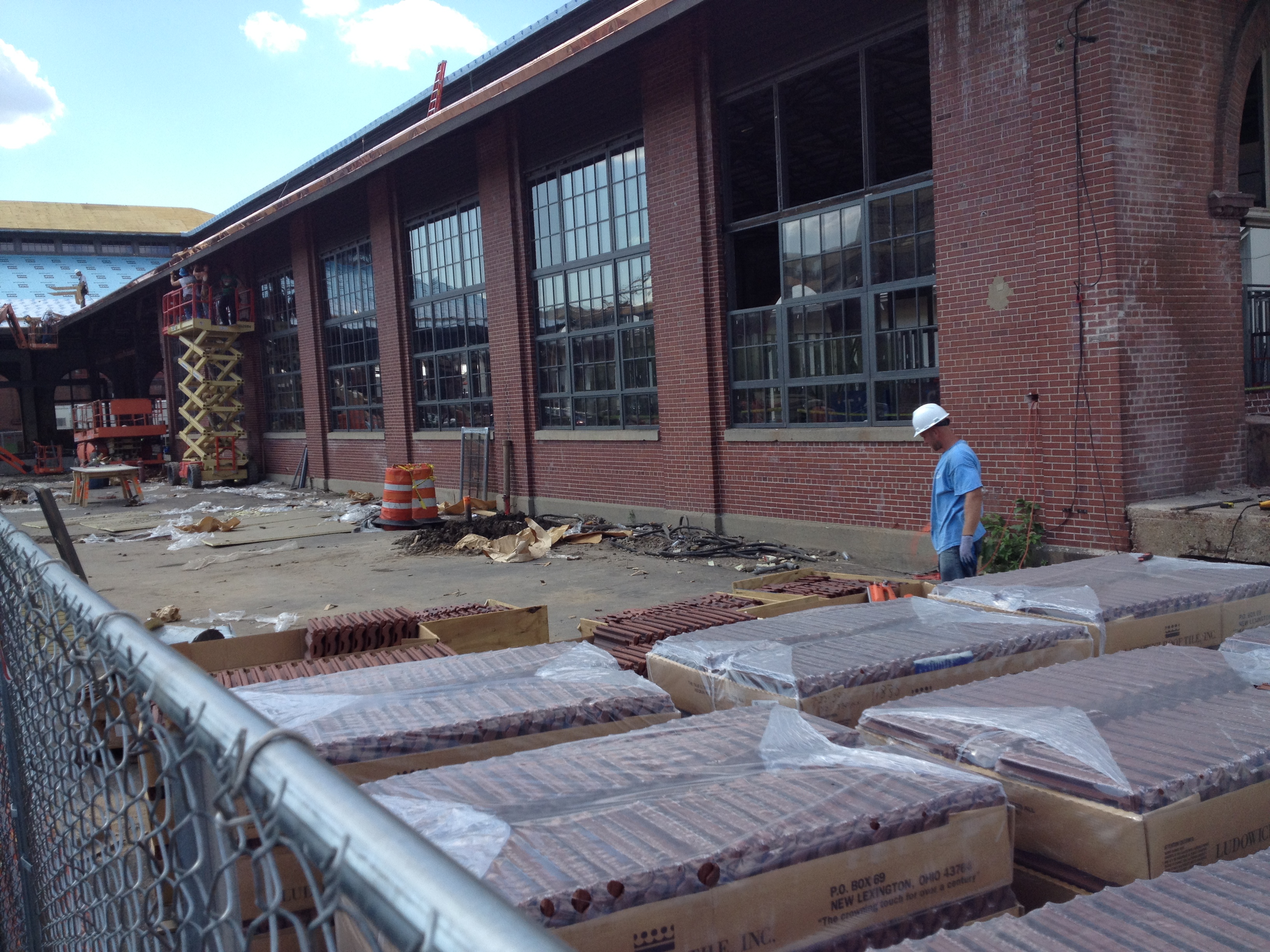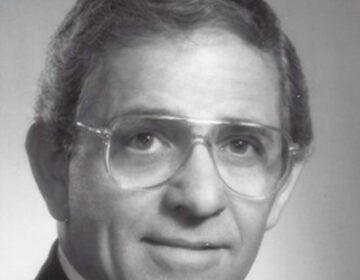On the brink of reaching a 10,000-jobs milestone, Navy Yard will soon release an updated Master Plan
The Philadelphia Navy Yard will soon be home to as many workers as the shipyard employed before it closed.
At the end of this year, GlaxoSmithKline will finish construction on its new Philadelphia facility at Five Crescent Drive. Its 1,350 current Center City employees will begin moving there in early 2013, bringing the total number of jobs at the Navy Yard back to about 10,000.
Reaching this milestone took 20 years – which was the prediction made by the task force then-Mayor Ed Rendell put together in 1992 to forge a plan for the future of the 1,200 acres on the Delaware and Schuylkill rivers at the southern end of Broad Street.
The Navy turned control of the yard over to the city in 2000, and the Philadelphia Industrial Development Corporation – a non-profit, joint venture between the city and the chamber of commerce – was given planning and development responsibilities. PIDC hired Liberty Property Trust to help with those duties for one section of the Navy Yard, called the Corporate Center. It is here that GlaxoSmithKline is constructing its new building.
“It’s a wonderful story of rebirth, but as good a story as that is, we’re not even halfway there yet,” said John S. Gattuso, senior vice president of Liberty Property Trust. “There will be 25,000 to 30,000 people working in (The Navy Yard) if you fast forward 10-to-15 years from now.”
Deputy Mayor for Economic Development and Director of Commerce Alan Greenberger, who also chairs the city planning commission, said it’s likely that in 10 years the Navy Yard will be the city’s third-largest job hub, behind Center City and University City.
In October, the Navy Yard is expected to release a new planning document. This update to the current master plan, which was done in 2004 by Robert A.M. Stern Architects and a team of real estate, development, planning and design professionals, will reflect changes in the physical reality of the land available, since a portion of land has gone to port expansion. It will also update goals related to housing, transit, employment and amenities, such as restaurants, retail and additional green space and trail connections.
The first city plan from two decades ago was used to negotiate a purchase agreement with the federal government, and was focused primarily on job creation, said Terry Gillen, the then-deputy commerce director who Rendell asked to lead the task force and the city’s current federal affairs director.
That document helped guide the 2004 plan, and in the October master plan update, further job creation – with emphasis in the worlds of high-tech manufacturing, natural gas and alternative energy, and energy efficient construction – will remain the focus, said Will Agate, vice president of Navy Yard management and development for PIDC, a quasi-city agency. The new plan will look at ways to better connect the Navy Yard with the city and region.
Gillen and Agate talk about the past and future of the Navy Yard
A bit of history
The Navy Yard’s origins coincide with the nation’s origins, and it was moved to the present site around the Civil War. Twenty years ago, the Navy Yard’s separation from Center City was considered an asset, said Gillen.
It can be hard for people to remember what Philadelphia was like in the early 1990s, she said, but some critics thought the 20-year time frame to bring back the jobs was too optimistic.
“The city was literally on the verge of bankruptcy in 1991-92,” she said. “It was hemorrhaging jobs. It was hemorrhaging people. Crime was rampant.”
Everyone wanted to be in the suburbs, Gillen said. “Television was even about the suburbs – 30-Something was the hot TV show. American cities were really considered to be a disaster and a bad economic investment.”
The shipyard jobs were one percent of the city’s job base back then, Gillen said.
“When the plan was done originally, the Navy Yard was no sure bet to anybody,” said Deputy Mayor for Economic Development Alan Greenberger, who is also the chairman of the planning commission and sits on the PIDC board. “Certainly, nobody envisioned a company like GSK being there.”
Gillen said despite the disinterest in cities, the first planning team believed the Navy Yard offered great benefits to the right businesses. “We understood we were building on the existing Navy engineers down here, and that access,” she said.
The Navy Ship Systems Engineering Station is still located at the Navy Yard. And there was also a locational advantage that remains – proximity to the airport, the port and highways.
There was enough space at the Navy Yard, and it was far enough from Center City, that any businesses which came could enjoy those benefits within a detached, suburban-style office park, if that’s what they wanted, Gillen said. “One of selling points in the ‘90s was ‘this is a secure site, not everyone can come here.’ For many years, the public could not come without permission or a pass.”
One turning point came in the mid 1990s, when Kvaerner – now Aker Philadelphia Shipyard – moved to the Navy Yard. “In many ways in the 1990s, this was the main focus of the public, who thought of the Navy Yard as just a shipyard,” Gillen said. “We happened to find one of only six shipbuilders of the world, and we were able to get them to come to Philadelphia.” Aker recently went through some tough times, laying off hundreds of workers. But orders for new ships received last fall turned the tide. Workers and apprentices were called back.
The flip side of getting businesses that fit well to come was saying no to ones that weren’t such a good fit, Gillen said. “We had every wacky idea you could imagine that people were proposing,” Gillen said. “It took a lot of discipline of the mayors, and other people who were running the city, to say no.”
Gillen said one example was when the scrap yard located at the Platt Bridge wanted to relocate to the Navy Yard. Agate said he is thankful that Disney On The Delaware never happened. “It could have been a very good project if it came about somewhere else, but it had nothing to do with the purpose of the Navy Yard,” he said. “You can use a well-written master plan to your advantage, defensively.”
Agate and Gillen said saying no to tearing down the Navy Yard’s old buildings – even some that were in rough shape – has also proven to be a huge asset.
People advised us to knock them down, because they would be a nightmare to renovate, and it would be much cheaper and faster to build new,” she remembered. “We made the decision to leave the core of these old buildings. The good news is, under LEED certification, you now get points for preservation.”
Another turning point – and the modern view of cities.
Some of those old buildings were revamped by Urban Outfitters and its 2006 unveiling of its campus marked another turning point for the Navy Yard, Agate said. That campus is growing, with renovations of another old building currently underway.
Urban Outfitters did not return calls and emails seeking an interview for this story.
Greenberger said Urban Outfitters’ young workforce exemplifies a change in attitude. “Younger people are very much interested in being in the city,” he said. “They not only like it for their early years, but many like it as families. It’s not that this wasn’t hoped for, but it was not clearly foreseen.”
Greenberger said the city is using this trend to encourage companies to create “gateway operations” in the city. Even if a company isn’t ready to move its headquarters or entire operation here, they can have a presence in an urban environment where young talent wants to live, he said. And once here, the Philadelphia presence could grow.
GSK never considered leaving Philadelphia, said Daniel Phelan, senior advisor to the CEO. But GSK considered other locations before settling on the Navy Yard for its campus-like setting and proximity to the airport – a big bonus for a multi-national company.
GSK qualified for the city’s 10-year tax abatement program on new construction, but no other incentives. There are a list of incentives that other businesses may qualify for, however. These include: Keystone Innovation Zone and Keystone Opportunity Improvement Zone tax credits. Tax credits for renovating historic buildings, as the Navy Yard is a nationally certified historic district. Research and development tax credits for start-up technology companies.
Phelan and Gattuso on why GSK and other businesses chose the Navy Yard, and what amenities would improve it.
Phelan said the move from Franklin Place was necessary because, world-wide, GSK is moving to a new style of work environment. The new building is clad almost entirely in glass, and has the bare minimum of walls inside. See a live image of construction and a rendering of the finished building here.
This creates a modern, open and collaborative workspace. Employees won’t even have an assigned desk. Instead, they will chose from multiple work stations, sitting near people they need to work with that day, or perhaps at a desk where they can stand instead of sit. Their work – and their phone calls – follow wherever they log-in. (A participant in a pilot open workspace program at the current building, GSK spokeswoman Jennifer Armstrong said the number of emails sent by people in the pilot has dropped by half – people just talk to each other.)
Agate and Gattuso say a similar concept is key to Navy Yard philosophy.
“It’s a whole attitude of creating collaborations,” Agate said. Some collaborations will come from the Navy Yard’s companies or education and research institutions planning to work together, Agate said.
Some collaborations will occur spontaneously, said Gattuso, when people run into each other on the waterfront trail, a sports league team or in a park.
Better connections
The Navy Yard’s separation from Center City might have been a selling point at one time, but no longer. While the drive from Center City to the Navy Yard via I-95 is quick – about 15 minutes – Phelan said the change that would most benefit Navy Yard workers in the future is a transit link extending the Broad Street subway line into the Navy Yard.
He’s not alone.
Having one or two terminals in the Navy Yard would be “a game changer,” Agate said. It’s something the 2004 Master Plan calls for, and it will remain in the update. The city’s comprehensive plan also calls for this connection, long-term.
It’s a very expensive proposition. And Greenberger said it has to be weighed “in the context of several other big, expensive transit ideas – we’re certainly not going to get all of them funded.”
The city has hopes of creating a multi-modal transit station at Market East and putting light rail along the Central Delaware and Roosevelt Boulevard, for example.
The Broad Street line ends at Pattison Avenue now. It’s not far, about half a mile, Greenberger said, and it’s not dangerous. But it’s not a pleasant, and people won’t do it.
An environmental impact statement on extending the subway is being worked on now, Gattuso said.
This Friday, state Sen. Larry Farnese will hold a forum of elected officials, transportation agencies and Navy Yard employers specifically to discuss the future transportation needs of the Navy Yard. A possible interim step is bus rapid transit, some of those interviewed for this story said.
Meanwhile, GSK employees will be able to take a shuttle from Center City to the Navy Yard, provided by PIDC. PIDC is working on a Navy Yard bike share program, so that even those who drive to work there can leave their cars to move about the Navy Yard or get to, say, restaurants at the new XFinity Live! development, for lunch.
And there is the issue of an express coach service – open to everyone – which will operate from Center City to the Navy Yard. According to SEPTA, the PIDC supported SEPTA Route 71 – Navy Yard Shuttle will be discontinued effective November 30. PIDC is withdrawing its financial support of this route in favor of a privately operated service to begin on December 3rd.
Will a subway connection exist in five years? “Probably not,” Gattuso said. “But in 10 years, it’s very possible.”
Living at the Navy Yard?
In discussions related to the Planning Commission’s creation of the Lower South district-level comprehensive plan, which was completed earlier this year, a SEPTA planner said the subway extension was not likely to happen unless people lived at the Navy Yard.
There is currently a deed restriction that prohibits residential use at the Navy Yard, Gattuso said, but negotiations to lift that restriction are underway, and lifting seems likely.
Despite the restriction, the 2004 Master Plan calls for a significant amount of housing around a marina. But some of that land is now Southport – the Port’s new container terminal. This is a big reason why the master plan needed to be updated, Greenberger said.
Rather than just shift the location of the marina and housing, this was an opportunity to re-evaluate, Greenberger said.
“There is an opportunity for a larger commercial development, that was not seen as clearly 20 years ago,” he said.
The fall update will “double the size of the original Corporate Center,” Gattuso said.
In the 2004 Master Plan, housing is an economic driver, Agate said, but in the update, residential development will exist to support the businesses already here and businesses of the future.
GSK’s Phelan said it would be great for employees if there were places to eat, take the dry cleaning and shop.
Agate agrees, and notes that proprietors will be way more willing to open things like that if their customer base is not just around from 9-to-5.
He believes there is demand for residential development at the Navy Yard, and also thinks prospective companies would see Navy Yard residences as a perk for their employees.
“When you start to talk about amenities, that’s where the residential component really becomes important. So that you have a true community that is open for business all day long, seven days a week,” he said.
But rather than suburban-style houses, Agate said, he says apartment buildings with “more of a vertical perspective” makes sense.
These would likely be housed in renovated buildings, Greenberger said, adding that the Navy Yard won’t ever be a major residential center.
Coming soon
The original RFP seeking a planner/developer for a suburban-style office park, which was then thought to be the best way to compete with the suburbs, Gattuso said.
What has evolved is four-to-five-story buildings on a street grid, he said – noting it reminds him of the scale of some European cities.
“We recognize today that there may not be enough concentration of active retail on the first floors,” Gattuso said.
Even before the update is complete, that is beginning to change, he said. Gattuso expects ground will be broken next week on a Marriott hotel that will be GSK’s neighbor and have a full-service restaurant on the ground floor. The next office building slated for construction will have ground-floor retail, he said.
A new park is also coming to the Navy Yard. It was designed by James Corner Field Operations – creator of the Race Street Pier in Old City and the High Line in New York City – and will be located in the Corporate Center portion of the Navy Yard, Gattuso said. “It will be the size of Rittenhouse Square, and the setting for another series of office buildings, which will surround it.” Construction of the park should start in late 2013, he said.
That park won’t just be for those who work at the Navy Yard, which is now open to the public, like any other part of the city, Agate said.
The history of limited Navy Yard admission still impacts people’s view, Agate said. And there is a guard house occupied by a guard at the entrance.
Agate said the guard will provide directions, ensure a big truck doesn’t go down too narrow a street, and wave, but is not there to keep people out.
Want to have a look around? A walking tour is available at the Navy Yard website, http://www.navyyard.org/
Contact the reporter at kgates@planphilly.com
WHYY is your source for fact-based, in-depth journalism and information. As a nonprofit organization, we rely on financial support from readers like you. Please give today.



